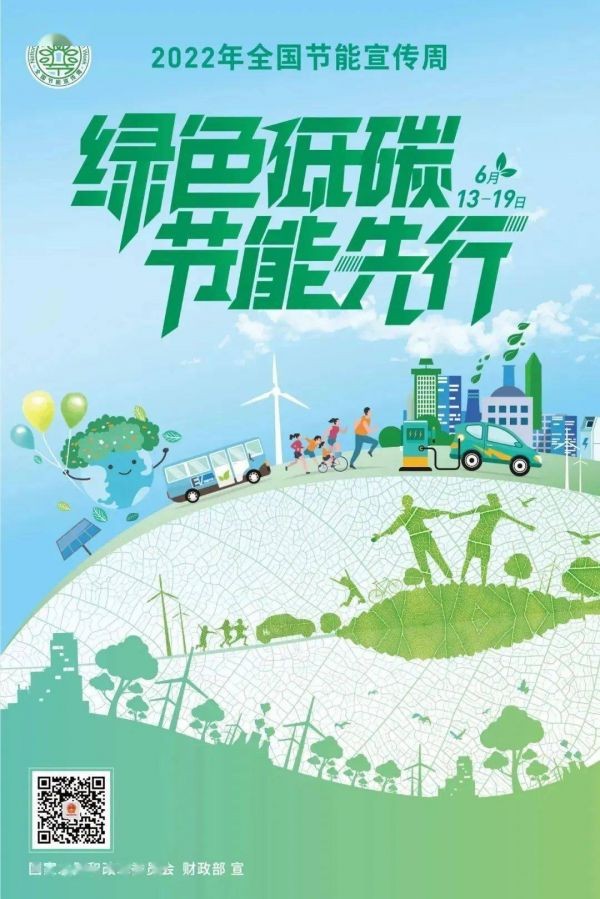AUBE欧博设计 – 有方
北欧设计强调人性化,床头柜常配有阅读灯,方便夜间阅读。 #生活技巧# #家居布置建议# #北欧家居设计#
深圳零碳公园及零碳生活馆 / AUBE欧博设计
编辑:李华(实习) | 校对:袁蓓祺 | 2023.08.11 17:42
 零碳生活馆半鸟瞰图 ©TAL
零碳生活馆半鸟瞰图 ©TAL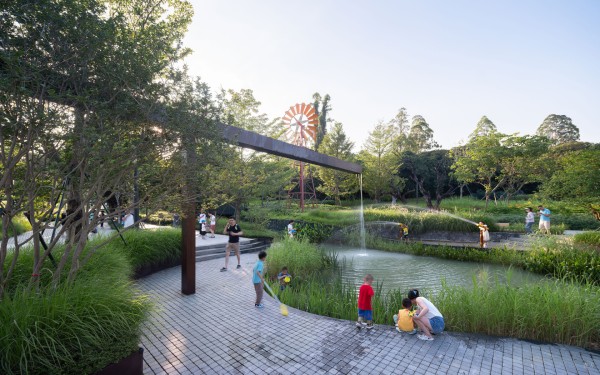 水风之谷—入口水渠 ©TAL
水风之谷—入口水渠 ©TAL设计单位 深圳市欧博工程设计顾问有限公司
项目地点 广东深圳
建成时间 2023年
用地面积 185,300平方米,其中建筑面积3,800平方米
本文文字由设计单位提供。
来一场城市漫游,随心所欲地去观察一座城市的过去和当下,City Walk,已是当下最受欢迎的旅行方式之一。在“千园之城”的深圳,公园蕴含着这座城市的腔调与脉络。AUBE欧博设计的一个个作品,正构建着富有诗意的城市场所:环境与时间交织成城市生活的剧场——深圳人才公园;雨和风的能量场——深圳深湾街心公园;首个以碉楼为主题的碉楼时光公园……目前,由AUBE欧博设计打造的深圳首个零碳科普主题公园及零碳生活馆,已建成并投入运营,公园目前基本实现零碳,正全方位助力“低碳坪地”。
City Walk has emerged as one of the most cherished ways to travel today, with unrestricted freedom to observe the past and present of a city, embarking on an urban odyssey. Shenzhen, known as the "City of a Thousand Parks," encapsulates the character and essence of this metropolis in its parks. Each creation designed by AUBE Conception adds to the formation of poetic urban spaces: Shenzhen Talent Park, the stage where environment and time intertwine to form the city's vibrant life theaters; Shenzhen Shenwan Street Park, the energy field of rain and wind; and Diaolou Time Park, the first Diaolou-themed park...Currently, the first zero-carbon science theme park and Zero-carbon Exhibition Hall in Shenzhen, crafted by AUBE Conception, have been completed and open to the public. The park has largely achieved zero-carbon emissions at the moment, wholeheartedly supporting the cause of "Low-Carbon Pingdi" in every aspect.
 整体鸟瞰图 ©TAL
整体鸟瞰图 ©TAL零碳公园——深圳首个低碳科普主题公园
深圳国际低碳城位于深圳东北门户龙岗区坪地街道,是首批国家低碳城试点项目,也是深圳市18个重点发展区域中,唯一以绿色低碳发展为特色的重要载体和示范窗口。深圳零碳公园位于深圳国际低碳城核心区,占地约18.5万平方米,功能定位为生态游览、康体健身、碳汇科普、互动体验的城市公园。
Shenzhen International Low Carbon City is located in Pingdi Residential District, the northeastern gateway of Shenzhen in Longgang District. As one of the first national low-carbon city pilot projects, the project also serves as a vital platform and demonstrative showcase characterized by green and low-carbon development among the 18 key development zones in Shenzhen. Shenzhen Zero Carbon Park lies within the core area of Shenzhen International Low Carbon City, occupying an area of approximately 185,000 square meters. Its functional orientation encompasses ecological exploration, physical well-being, carbon sink awareness campaign, and interactive experiences within an urban park setting.
 零碳生活馆鸟瞰 ©TAL
零碳生活馆鸟瞰 ©TAL在公园的整体设计中,设计师贯彻六大低碳设计策略,能为公园每年减少碳排放量约3,700吨;通过减少开采、运输和加工新材料过程中的碳排放,延长回收材料的生命周期,可节约建造过程中约103吨的碳排放量;选用光伏组件每年可等效减少二氧化碳排放65余吨,全方位助力龙岗区坪地街道的绿色低碳发展。
Within the overall design of the park, six major low-carbon design strategies have been implemented by AUBE team, resulting in an annual reduction of approximately 3,700 tons of carbon emissions. By minimizing carbon emissions during the exploitation, transportation, and processing of new materials and extending the lifecycle of recycled ones, around 103 tons of carbon emissions are conserved during the construction process, and the effective employment of photovoltaic components decreases the equivalence of more than 65 tons of carbon dioxide emissions each year. In this way, the project strives to support the green and low-carbon development of Longgang Pingdi Residential District in all aspects.
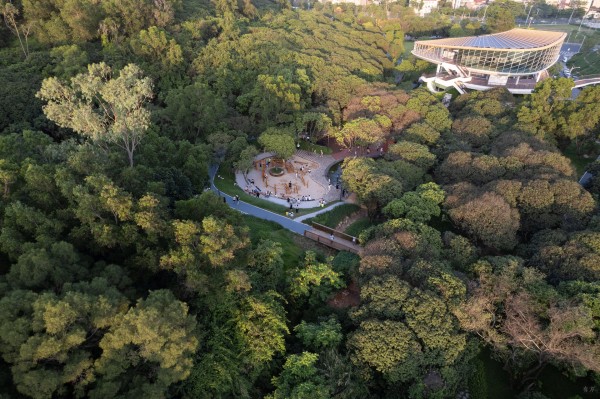 局部鸟瞰 ©TAL
局部鸟瞰 ©TAL自然生态基地——绿色低碳策略
项目所在原生地山体资源丰富、自然基地优越,设计的重点在于如何将场地优势资源最大化、如何在保护现状生物生境的同时引入人的活动。设计师以自然生态为基底,力求对自然山体的最小介入,依势而建,实现土方平衡。同时设计师提出LID低冲击开发、低碳植物设计、低碳工艺材料、低碳能源利用、海绵城市设计及低碳科普运营六大策略,将人、动植物、自然环境融合,打造一个融入原生环境的“零碳”主题公园。
Situated amidst a rich abundance of mountain resources and a splendid natural establishment, the focal point of this project lies in maximizing the advantages of the site's resources. How can one introduce human activities while preserving the existing biological habitats? Embracing the foundation of natural ecology, the design team pursues the minimization of interference with the natural hills, building in harmonious accordance with the terrain and achieving earthwork equilibrium. Simultaneously, the team proposes six major strategies: low-impact development (LID), low-carbon plant arrangement, eco-friendly construction material application, low-carbon energy utilization, sponge city design, and low-carbon science-themed operation. By seamlessly integrating the human race, flora, fauna, and the natural environment, the project aims to craft a "zero-carbon" theme park that harmoniously blends with its pristine surroundings.
 入口广场 ©TAL
入口广场 ©TAL公园整体贯彻六大低碳设计策略,立足生态本底,实现低冲击开发。开发过程中保留原有乔木和地被近18万平方米,新增植物的品种上优先选择高固碳植物和乡土植物,通过复层结构种植模式,提高植物单位面积的固碳效益。设计结合场地高差、汇水分区设置多种海绵城市设施蓄水、净水,实现年径流总量控制率为82.54%,面源污染削减率达75.19%,形成高标准的网络化自然生态海绵体系。
The park adheres to six major low-carbon design strategies, rooted in ecological principles, and achieves low-impact development. During the development process, nearly 180,000 square meters of existing trees and ground cover are preserved, while newly introduced species prioritize high-carbon sequestration plants and native flora. Employing a multi-layered planting pattern, the carbon sequestration efficiency per unit area of vegetation is increased. Taking advantage of the site's elevation differences and catchments, various sponge city facilities are strategically placed to retain and purify water, resulting in a 82.54% control rate of annual runoff and a 75.19% reduction in non-point source pollution, establishing a high-standard, interconnected, and nature-based sponge ecosystem.
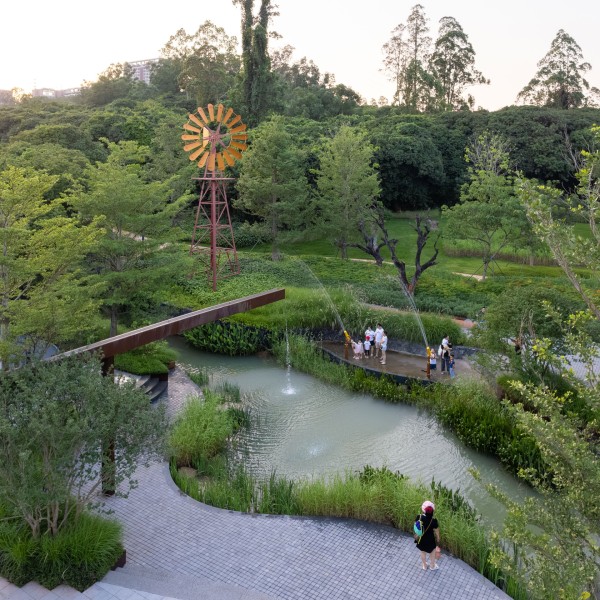 入口水渠 ©TAL
入口水渠 ©TAL水风土石之地——打造“无痕森林”
公园内设有赤脚乐园、亲水溪流段、生态广场展示区等科普区域,通过“水风之谷、光电之丘、土石之丘、林木之丘”四大板块并经由主园路串联起零碳科普路径,带来富有趣味的活动节点,重新定义城市公园中的零碳主题体验。
Within the park, there lie educational zones including the Barefoot Park, the Waterfront Creek Section and the Ecological Plaza Exhibition Zone. Connected by the main park roads, the zero-carbon science-themed path weaves through four main segments: the Valley of Water and Wind, the Hill of Solar Energy, the Hill of Earth and Stone, and the Hill of Forests, which provide captivating activity nodes and redefine the zero-carbon theme experience within an urban park setting.
 水风之谷—入口水渠 ©TAL
水风之谷—入口水渠 ©TAL水风之谷,水和风的主题,作为场地的集中建设区,林木少、地势平坦,设计利用山谷平地,结合现场水渠、土崖、植被等资源,为游客营造一个聆听风、触摸水、感受微气候、感受自然的空间。
The Valley of Water and Wind, centered around the themes of water and wind, serves as the focal point for concentrated construction within the site. With fewer trees and a level terrain in this area, the valley maximizes the utilization of flat ground while incorporating existing waterways, earth cliffs, and vegetation resources to create a space where visitors can listen to the wind rustling, reach out to the water flowing, indulge in the microclimates, and immerse themselves in the embrace of nature.
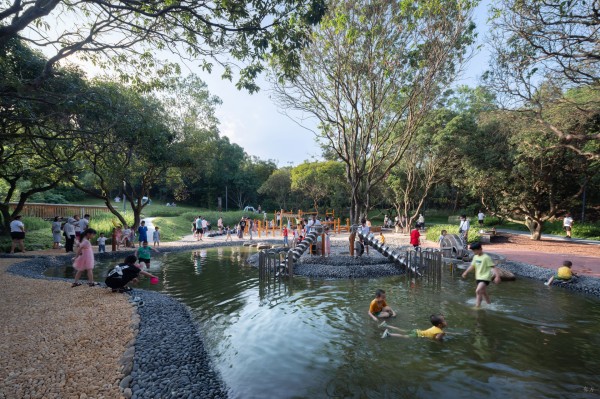 赤脚乐园 ©TAL
赤脚乐园 ©TAL其中,位于公园山谷边界的赤脚乐园充分利用现状大片荔枝林及林下水渠打造自然野趣的儿童活动区。水渠经由局部改造,化身为孩子们嬉戏玩乐的亲水空间,沙土、原木等天然材料设置的游戏设施则与低碳科普相互结合,寓教于乐。不同材质的赤脚体验环线,鼓励儿童及家长脱下鞋子,脚踩树皮、松果、火山岩、卵石、泥地等碳排放因子较低的原生态铺装,带来与自然接触的新方式。
Located at the boundary of the park's valley, the Barefoot Park fully utilizes the existing large lychee forest and the waterways beneath to create a natural and adventurous activity area for children. Partially altered waterways are transformed into a playful waterfront space for the young, while game facilities made of sand, logs, and other natural materials are ingeniously integrated with low-carbon science education, making learning enjoyable. A circular barefoot experience path, composed of various materials including tree bark, pine cones, volcanic rocks, pebbles, and mud with lower carbon emission factors, encourages children and their parents to take off shoes and experience a new way of connecting with nature through direct contact with the raw ecological paving.
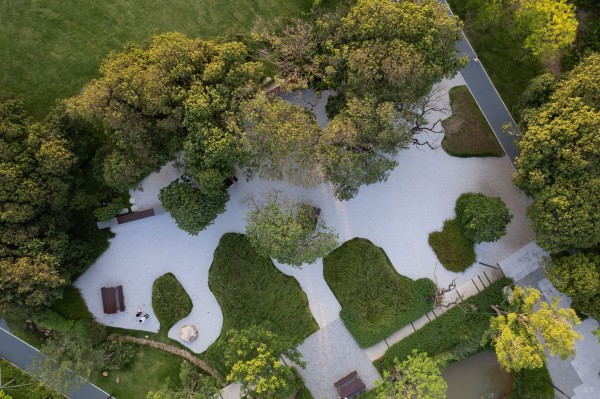 荔林广场 ©TAL
荔林广场 ©TAL土石之丘,保留了大部分的原有植物,并深度践行“无痕山林”的生态可持续设计理念。园内自然郊野径施作过程因地制宜,针对不同难度的路段分别采用了不同种类的排水、高差、消能、护坡处理方式。山林中的石材与风倒木得以循环利用,人力搭建的方式以低设施、低冲击的特性,充分考虑步道使用者的需求与感受,打造既符合环境美学又兼具生态保护功能的自然郊野径。
The Hill of Earth and Stone retains the majority of its original vegetation while the ecological and sustainable design concept of a "Traces-Free Forest" is practiced with profundity. The construction of Natural Wilderness Trails within the park follows a site-specific approach, employing different types of drainage, elevation handling, energy dissipation, and slope protection techniques to address the various routes of varying difficulty. Recycling the stones and fallen trees from the forest, the construction process is carried out manually with minimal infrastructure and low-impact techniques. Taking full consideration of the needs and experiences of trail users, this approach ensures that the Natural Wilderness Trails not only fulfill environmental aesthetics but also serve as a means of ecological preservation.
 手作步道 ©TAL
手作步道 ©TAL 自然郊野径 ©TAL
自然郊野径 ©TAL该区域内建设有环形造型的远眺平台,廊架上铺设约60平方米的太阳能光伏板,每年发电量约9,070度,可减少碳排放量约5,300千克。木平台选用原生态材料作为建材,并布置游戏设施、科普牌等,为游客休憩时提供良好的观景视角,同时丰富游客的低碳体验。
Within this area, there is a circular-shaped Viewing Deck, featuring a pergola covered with approximately 60 square meters of solar photovoltaic panels which generates about 9,070 kilowatt-hours of electricity annually, leading to a reduction in carbon emissions of approximately 5,300 kilograms. The wooden platform is constructed using native ecological materials and is equipped with recreational facilities and informative boards, offering visitors a pleasant vantage point and enriched low-carbon experiences while they relax and enjoy the breathtaking views.
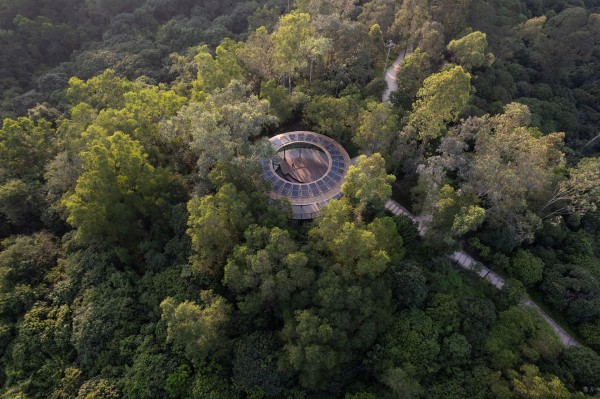
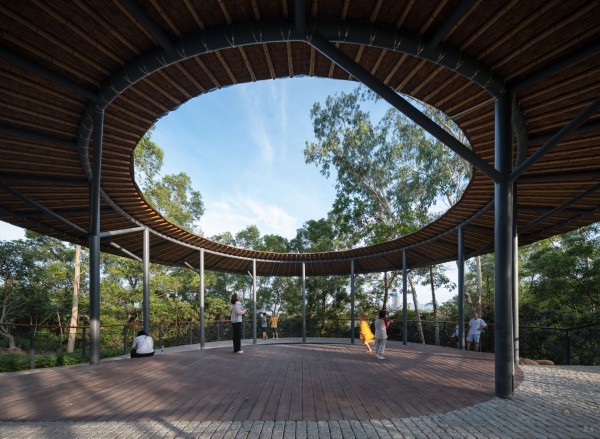 土石之丘—天空环亭 ©TAL
土石之丘—天空环亭 ©TAL林木之丘,尊重场地原有林木现状的情况下,打造特色林木科研观赏林。植物的设计充分保留现状林地优势植物资源,对长势较差的桉树林进行林相改造,增加大腹木棉等高固碳植物,同时对场地裸露边坡进行覆绿。
The Hill of Forests is dedicated to crafting a distinctive forest area for both scientific research and scenic enjoyment while respecting the existing state of the vegetation on site. The design of the plants fully retains the advantages of the current forest vegetation, enhances the eucalyptus grove in forest forms and also introduces additional high-carbon sequestration plants, such as the large belly kapok. Meanwhile, the exposed slopes of the site are treated with vegetation coverage.
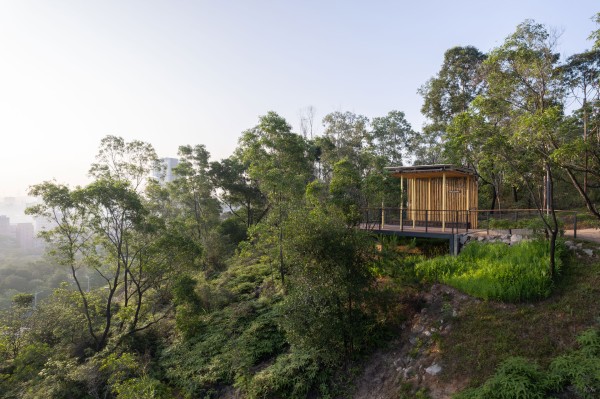 远眺观景平台 ©TAL
远眺观景平台 ©TAL观景台立面材料采用山体自有的生态竹子,整体造型轻盈、自然,最大限度弱化人造痕迹,使其隐于山林之间。
The Viewing Deck's facade utilizes ecologically-sourced bamboo from the surrounding mountains. The overall design exudes a sense of lightness and naturalness, aiming to minimize artificial traces and allow it to blend amidst the lush forest of the mountainous landscape.
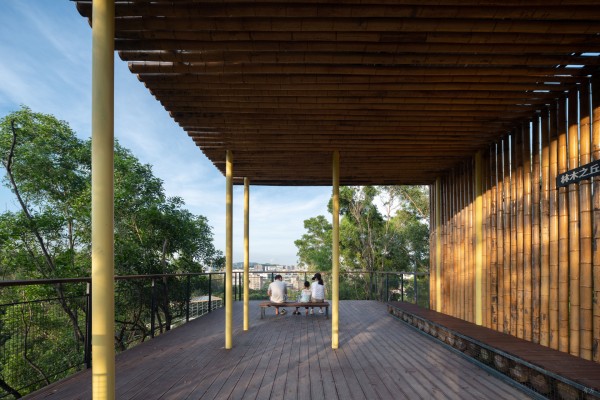 观景平台 ©TAL
观景平台 ©TAL光电之丘,为区域内变电站所在,设计师将废弃的高压塔增加艺术麦穗灯等艺术化处理,结合自然条石和公园LOGO,悬浮的坡道和楼梯建立在现有灰色的格构梁挡墙之上,并结合生态化处理,让次入口在整体生态自然的形象前提下更具标识性。
The Hill of Solar Energy is home to the regional power substation. By transforming the abandoned high-voltage tower into an artefact with artistic wheat lights, natural strip stones and the park's logo, along with the suspended ramps and stairs built on the existing gray lattice retaining walls, the design team highlights the secondary entrance's distinctive character while maintaining the overall ecological and natural image.
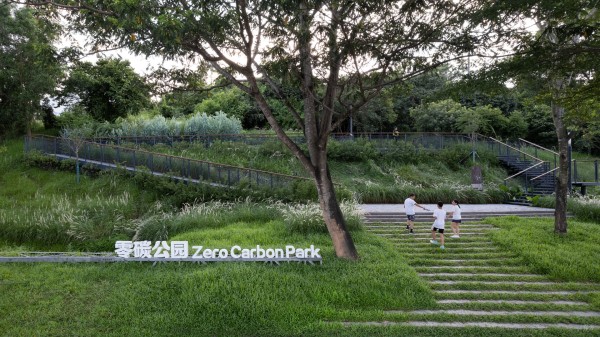 公园次入口 ©TAL
公园次入口 ©TAL零碳生活馆——融入原生环境的建筑物
零碳生活馆和公园管理服务中心用房分别位于公园中心和入口附近,隐藏于山谷之中的零碳生活馆与自然融为一体,占地约2,600平方米,建筑面积约2,800平方米。建筑以集中式平面布局减小占地面积并以覆土建筑形式消隐体量,避开场地内大面积荔枝林,减少人类行为对自然环境的干预。空间形态汲取传统岭南建筑的被动式设计原理,屋顶状如斗笠,与建筑主体相互脱开盘旋而上,中间架空,自然地分成三个层级,提供大面积遮阳的同时,形成开放式对流空间。采光中庭进一步柔和光环境,加速空气流动,缓解热岛效应。
The Zero Carbon Exhibition Hall and the Park’s Management Service Center are respectively located at the center and entrance of the park. The Zero Carbon Exhibition Hall, nestled within the valley, seamlessly blends into its natural surroundings covering an area of approximately 2,600 square meters with a floor area of around 2,800 square meters. Taking on an earth-covered form, the architecture adopts a centralized layout to minimize its footprint, cleverly concealing its volume and avoiding extensive lychee forests on the site, thus reducing human interference with the natural environment to the most. The spatial form draws inspiration from the passive design principles of traditional Lingnan architecture, where the roof of the pavilion resembles a conical hat, gently lifting and spiraling away from the main structure, creating three distinct levels with open spaces in between that offers extensive shading and fosters natural airflow. The application of a daylight-filled atrium further softens the light conditions, enhances air circulation, and mitigates the heat island effect.
 零碳生活馆半鸟瞰图 ©TAL
零碳生活馆半鸟瞰图 ©TAL 管理服务中心 ©TAL
管理服务中心 ©TAL零碳生活馆底层架空,建筑内部空间与周边自然环境既独立又融合,吸引公众走进建筑并愿意在此停留。约700平方米的太阳能光伏板铺满屋顶为建筑建设及使用提供能耗,多余能源可回馈电网,实现真正意义上的零碳建筑。零碳生活馆内部利用大数据分析技术对公园环境发电量、温湿度、水循环等指标进行实时监测,并于馆内布置互动展示区域,向公众科普可再生能源应用、绿色建筑设计、数字碳中和等新型低碳技术,传递绿色低碳生活理念。
Elevated at the ground level, the Zero Carbon Exhibition Hall allows its interior spaces to be both independent and integrated with the surrounding natural environment, which entices the public to explore, stay and engage with the building. The rooftop, covering approximately 700 square meters, is adorned with solar photovoltaic panels that provide energy for both construction and operation of the building. Any excess energy can be fed back to the power grid, achieving the true essence of a zero-carbon building. Inside the Zero Carbon Exhibition Hall, cutting-edge big data analysis technology is employed to monitor various environmental indicators of the park in real time, including power generation, temperature, humidity, and water circulation. Interactive display zones are set up within the pavilion to help educate the public about renewable energy applications, green architectural designs, and innovative low-carbon technologies, further promoting the concept of green and low-carbon living thereby.
 零碳生活馆夜景 ©TAL
零碳生活馆夜景 ©TAL设计师创作手记
零碳公园,两个山头和一个谷地,虽然没有特别突出的自然条件,但胜在自然和原始,而设计师设计的出发点,也正是从守护现场的一草一木、一石一水开始的。因形就势、因地制宜、就地取材,就是最好的低碳理念,回收利用山林中的枯木和石头,做成坐凳、台阶;把雨水收集起来形成互动性的水景;破除的混凝土铺成路面;也使用了大量的光伏和低碳技术。最终,设计师希望来到零碳公园的每个人,在每一处都能感受到低碳,并慢慢养成低碳的生活方式,以最轻的方式推动“将自然还给自然”的低碳理念。
Zero Carbon Park, with its two hills and one valley, may not possess the most striking natural features, but it excels in its natural and primal essence. Our design approach begins with cherishing every trivial nature element on the site. Shaping the design according to the terrain, adapting to the local conditions, and utilizing on-site materials are the best low-carbon principles. We recycle and repurpose fallen trees and stones from the forest into benches and steps, collect rainwater to create interactive water features, replace concrete with permeable pavement, and incorporates a substantial amount of solar panels and low-carbon technology as well. Eventually, our ultimate aspiration is for everyone who visits Zero Carbon Park to experience low-carbon initiatives in every corner and adopt a low-carbon lifestyle step by step. We aim to promote the idea of "giving nature back to nature" in the lightest possible way, and instill the concept of low-carbon living into the hearts of all who come here.
完整项目信息
项目名称:零碳公园及零碳生活馆
项目地点:广东省深圳市
设计单位:深圳市欧博工程设计顾问有限公司
客户:深圳市龙岗区城市管理局、深圳华城国际低碳城开发建设有限公司
设计范围:建筑、景观
主要功能:城市公共休闲空间、科普馆、管理用房
用地面积:185,300平方米
景观面积:185,300平方米
建筑面积:3,800平方米
设计时间:2019年
建成时间:2023年
版权声明:本文由深圳市欧博工程设计顾问有限公司授权发布。欢迎转发、禁止以有方编辑版本转载。
投稿邮箱:media@archiposition.com
网址:AUBE欧博设计 – 有方 https://www.yuejiaxmz.com/news/view/240576
相关内容
欧式儿童房设计方案推荐助力“低碳节能建设”加速度 欧瑞博开启新一轮中央空调技术革命
助力“低碳节能建设”加速度欧瑞博开启新一轮中央空调技术革命
欧式卧室有什么特点 欧式卧室的设计要注意什么
助力“低碳节能建设”加速度欧瑞博开启新一轮中央空调技术革命丨艾肯家电网
欧式复古设计图片
简欧家具设计 感悟生活乐趣
欧式田园风格装饰怎样设计
欧派厨房电器解决方案
建博会全屋定制火力全开 设计收纳升级更能“装”

